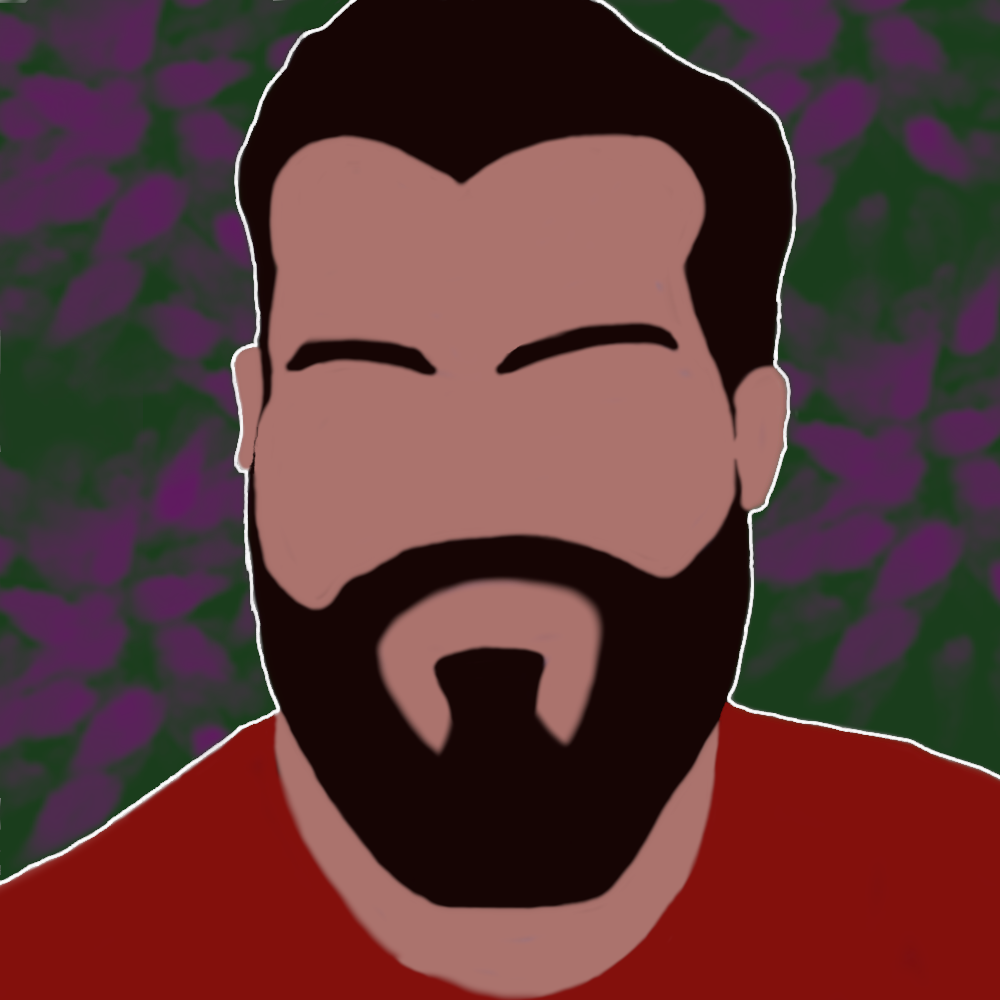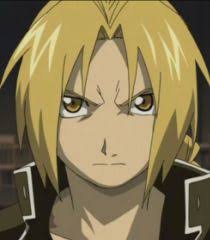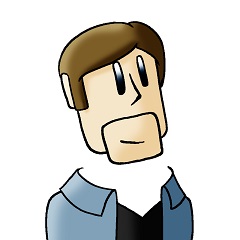Dragons
Dragon. The mere word alone can cause shivers of terror and awes of wonder. As deep a mystery to us as magic itself, and with even fewer options to research. Many of our modern spells and knowledge can be traced back to lessons learned from Dragons as reward for us worshipping them as deities. Some countries, such as the Celestial Empire still do exactly that. Marvelous beasts. You've never experienced life until you've felt one's roar tremor the earth, its flames melt a mountainside or its claws shred plate armor like a hot knife through lard. Nor have you lived until you've sat down and laughed at their jokes, or played a game of cards with one. I assure you, reading a Dragons poker face is quite difficult.
Summary
Dragons are a species that are as old as the world itself. Created to be the manifestations of the natural world, essentially the children of The Celestial. They have existed since The Creator split into three separate beings and the world was founded. Initially, the rivals of The Firstborn until the race began to realize their own doom and focused on their own survival desperately. Dragons can be found in sketches since ancient times. Dragons have since been come to be worshipped as gods in many cultures and respected by almost all life across the world. As time has passed, Dragons, like all species have evolved. This has caused them to form into several sub-species that decorate the different climates of the world. Despite this, all of these sub-species still have the same basic anatomy and abilities, with slight variations. Although unusual to see, they are not so rare as to never be sighted--though usually their appearance is said to bring doom in all but a handful of cultures.Anatomy
As a whole, Dragons are quadrupedal animals, no matter the sub-species they hold four specific limbs universally as well as a long prehensile tail used for enhanced balance and mobility. Dragons have an anatomy that is unique only to them, due to their natural existence as a species bound to the elements of earth and metal. In the simplest description, they eat metals in order to grow. They derive no nutritional value from eating "living beings", such as plant matter, flesh, bone, and so forth. Although they can taste such things if they wish to partake, it is rare they bother due to their instinctual demand for minerals and pure metals. Though they are technically only mineral-eaters, they are often mistaken as carnivores due to their teeth designs. Their front teeth all being shaped like great cuspids with pointed tips, however, these teeth are not for shredding meat, but for acting as pick-axes to rip up chunks of metal from the earth. In contrast, their back teeth are then lined with thick molars designed to crush the metal and minerals into powder and small chunks to be ingested. These teeth are able to infinitely regenerate and grow from their hearty roots. When it comes to their internal organs, many find it incredibly odd that dragons lack a proper digestive system in the same way normal species do. Dragons lack any form of an excretory system, and instead, anything that they eat is transferred directly in their body and stored in extra stomachs that act similarly to organic pouches within the Dragon. Metals are broken down and absorbed into the body inside the primary stomach, building up the Dragons body. Organic matter that may come with this is then broken down in the same location but instead of being absorbed turns specifically into methane, which is then stored inside the second--and far larger--organic pouch. This organ holds no acid but instead acts as an organic gas tank, storing the natural gas, hydrogen, and oxygen that comes from the dragon ingesting water and organic matter. This gas, for the flying sub-species, is also greatly helpful in keeping their bodies in the air. For all species, however, these gasses can then be released outward from the siphon acting as its launch to flow back out the throat. A palatal valve made of hardened flesh activates to protect the lungs and windpipe, allowing a dragon to breathe the gasses out at will. For dragons that have begun eating minerals, this allows them to then click their metallic teeth together enacting a spark--and turning the stream of gasses into a searing explosive flame. While organic matter and water are turned into gasses to be weaponized, metals and minerals are absorbed into the body as previously mentioned. This material is then rapidly bonded to the Dragons body, quite literally turning into their new body-mass distributed evenly across their entire bodies. In this way, Dragons do not grow naturally through age, but instead, only grow based on how much of certain minerals and metals they eat. Should a dragon eat an iron sword then the mass of the sword would be directly transferred into the body of the dragon as new mass. It's also worth noting that should a Dragon eat impure metals, such as bronze, steel, and so forth, they will react similarly to being poisoned as their stomachs cannot breakdown the new chemical compound. This is not to say Dragons cannot become a mixture of metals by any means, but if it is ingested then they must eat them as two separate forms of metal and have it bond naturally throughout their body. It cannot be introduced to their stomachs as a pre-bonded compound. Dragons are also able to eat minerals, such as lime, stone, bedrock, and so forth. However, they generally try to avoid this unless it's an emergency situation due to the inferior material that it is in comparison to metals. This is because the minerals that a Dragon eats becomes their body, quite literally. The more of a mineral or metal that a Dragon ingests the more their body takes on aspects of that material. A Dragon that feasts on large amounts of gold will have a high resistance to acid and corrosive effects, heavier than normal, and have a tougher hide but will not have nearly as strong a hide as a dragon that has eaten iron. The iron dragon, on the other hand, suffers a weakness to corrosive effects in return for higher base durability, and so forth. It's not unusual for Dragons to be a rainbow of different metals due to simply "eating what was available", and in these cases the effects are balanced based on how much of each metal is within them. As well, if a Dragon is injured, both their lost blood and the damaged flesh must be reconstructed by eating metal or minerals. They cannot heal naturally on their own, and require energy from themselves to halt the bleeding. Their blood will hold similar properties as liquified metal that they have eaten--often causing it to be hungrily sought after by alchemists and blacksmiths. In order to truly repair themselves, they must eat metal, and the wounds will then slowly close and turn into the same metal that they used to repair the damage. Due to this, "scar tissue" is very obvious on a Dragon, especially those that are purists. Many an "Ancient Gold Dragon" is dotted with strips of iron due to eating swords on a battlefield to repair the damage they have sustained in the fight.Sub-Species
Dragon Sub-Species come in the form of three separate branches. These have been termed by the @merlin as: Wyvern, Drake, and Wyrm. There are some that reside somewhere roughly in-between based on evolutionary branches, but in general, every Dragon found to date can be applied to one of the three sub-species categories fairly easily. Though it is a controversial subject to many Dwarves are technically also considered a sub-species of the mighty race.Wyvern
Wyverns are the only species of Dragon that are capable of flight naturally. Their two frontal limbs take the shape of great wings that extend outward similar to that of a bat. The one digit on the primary joint of the wing curling into a great deadly claw and chunk of flesh and bone that allows them to "walk" on the limbs with the wings folded if they wish, though not as effectively as a properly working foot or hand. Each wing is as long as their entire bodies in comparison. They also have a hood of scaled flesh that can expand from their neck to provide additional air coverage. The hind legs of the Wyvern are sturdy and broad with toes that are longer than normal designed clearly for striking while in flight with long, deadly talons. Unlike their cousins, Wyvern hold hollow bones, and as such despite their durability as a Dragon due to their metallic nature, they are still incredibly light and fragile by draconic standards. This lower weight is required, however, to allow their flight. Similarly, they use their gas sack to store and hold the gas in order to maximize their buoyancy and minimize their effort while flying. This also allows them to descend more quickly by releasing the gas stored at a rapid pace, and are even knock for using their fire-breath, sacrificing this gas in return for creating thermals with the heat to propel themselves mid-air in emergencies or aerial battles.Drake
Drakes are the most commonly sighted Dragons on the Zaria, due to their nature of plains and forests. Four-legged beasts, Drakes are often called "overgrown lizards" due to being build similarly to large lizards or crocodiles with longer limbs. With builds similar to a great cat, they are lithe muscle covered in hardened scale armor with devastatingly powerful limbs and broad builds. Designed for sprinting, tackling, and tearing through anything in their path with raw durability and power.Wyrm
Wyrm are the rarest form of Dragon, as they have specifically evolved to live within the aquatic world. Due to this, they are generally found decorating the coasts or being worshipped within the Celestia as household gods. These dragons are snakelike in build, holding four small limbs that have been webbed akin to flippers ending in deadly claws. Holding the strongest jaws of all the species, with immense swimming speed and a highly potent weaponization of their water surroundings by having a constant supply of it. They are well known for releasing bursts of pressurized, boiling hot water or steam like blades from their mouths. Their travel speed underwater is unmatched by any other species, even merfolk, though due to their shape they tend to have a severe disadvantage on land compared to their cousins. Like their Wyvern cousins, they have a collapsible hood of scaled flesh at their necks and tails to help movement underwater and act as a rudder for them while traveling. Due to their nature it's worth mentioning that often with the lack of proper metals to eat, Wyrms tend to eat minerals far more often and are often seen as "weaker" due to this, though their mystical aptitude, tactics, and biological weapons are usually superior due to their environment weakening them, forcing them to adopt other methods.Dragonborn
Known by many other names and titles such as Half-Dragons, Dragonlings, Dragon-kids and so forth Dragonborn are the rare and unusual children stemming from the courtship of a Dragon and individual of Firstborn descent. This pairing requires the non-Draconic parent to hold substantial Firstborn blood, such as Deva, Daevata and the like. These creatures are born in the shape of humanoids and cannot hatch from an egg, restricting them to humanoid mothers, or a Draconic mother willing to remain in humanoid shape for months on end. Dragonborn eventually grow into humanoids with permanent Draconic features, including scales, horns, reptilian eyes and some of the natural powers of their Draconic heritage. They inherit limited traits from their non-Draconic side. Unlike their own parentage, Dragonborn can breed with any other humanoid or Dragon. When Dragonborn breed with humanoids the Draconic blood rapidly dilutes away from notable physical traits, and only lingers in spiritual and mystical energies instead until after only two to three generations the Dragonborn children will appear to be normal humanoids.Abilities
Dragons hold a wide range of abilities, from their natural size and durability to their reliance on raw energy, metals, and minerals to survive. The most notable aspects come based on their sub-species, but universally all dragons hold a set amount of benefits unique to their species.- Mystical Bond: Dragons are naturally bonded, at birth, to the land around them and the energy of the world. This allows them to, eventually, access the power of "True Magic", and causes them to be innately magical on some level. This allows them to naturally bend the laws of physics in ways that normal beings, beyond perhaps The Firstborn or Fae. This is part of the reason that Wyvern can fly despite their weight and the material they are made of, combined with their natural evolutionary quirks, how a dragon is able to passively project their thoughts into the minds of nearby creatures, or how all Dragons can stay in stasis within their eggs, etc.
- Shapeshifting: As Dragons grow in size and age, they begin to develop more than just physically. As they begin to feel the true pulse of energy around them, they are able to alter their physical appearance into that of something else. A humanoid state that is a passed down gift of The Celestial. This form is essentially their "Peaceful Form", and its draconic features vary based on the mastery of the Dragon in question.
- Magic-Eating: Dragons feast on the energy of the world, harnessing it through the metals and minerals that they eat and channeling it into their bodies as they are "improved" with such materials. This same ability allows a Dragon to quite literally "eat" energy in its purest form, ie. Magic. The extent of this is based on their age and skill, but Ancient Dragons are well known for their ability to snap a fireball out of the air and absorb its energy into themselves, restoring their stamina.
- Natural Weapons & Armor: All Dragons hold incredibly sharp claws and front incisor teeth, these natural weapons are enhanced even further by the minerals and metals that they devour. Turning them into deadly weapons superior to normal swords and spears. This same rule applies to their scaled armor that coats their bodies, making even the most fragile Dragons incredibly sturdy compared to the "lesser races".
- Firebreath: A natural weapon in a way, Dragons hold their unique organ design that produces gas. When combined with a click of their metallic teeth creating a spark, this allows them to release an explosive wave of lit gas. These flames are tremendously hot, and as they drain no stamina from the dragon, are an incredibly potent backup weapon so as to not rely on their own stamina for magic.
- Size and Power: Due to their natural biology, Dragons are not reliant on time to become stronger. Through the ingestion of pure metals, they grow, and as they grow their raw physical power and lifeforce grow with them. Thus amplifying their raw mystical power, and physical destructive force, speed, and so forth.
- Intelligence: From the day a Dragon hatches, they are gifted with an intellect comparable to that of a human. This, combined with their immense lifespan, hunger for knowledge, and animal-like instincts make them ruthless and tactical opponents that few wish to insult or deal with, in or out of a battle. Well known for their games of riddles, and skill in chess or other mental games. Often rewarding travelers that best them in such things, if they're in a good mood.
Social Behavior
As a general rule, Dragons, like humans in many ways vary on an individual by individual basis. Some are monstrous, haughty things that loathe the "lesser races" and see themselves as above them. Lording over them as gods or kings. Others are content acting as hermit-like creatures ruling over areas of land wordlessly as long as their stockpiles of precious metals are untouched. However, regardless of their personality types, all tend to have several aspects in common. In general, Dragons are anti-social creatures, preferring to remain alone or at most in pairings. There are few instances of this rule changing, as even in the Celestial Empire where they are worshipped as household gods, every household generally only has a single Dragon ruling over them. The only exception to this are when Dragons mate, in which case they may be together a few years, upwards to hundreds depending on how well the pair may get along. Family groups are practically unheard of. As well, even the most helpful, social, and humorous Dragon tends to have a large degree of pride. Though they may not view the other races as "lesser" they likely do view themselves as the superior "individual" instead of being of a superior "race". They are usually happy to boast, drink, laugh, and play games. But when their patience is over, they make it clear and expect their conversational partners to obediently do as they are hinted at, or in some cases directly told. Even as intelligent as they are, in the end, they still hold the instincts of a predatory animal and as such when they are done with a topic it is usually wise to follow along with the new flow, or end the conversation. Even Dragons that don't fly, tend to enjoy high places. Often found perched on great trees when small, and on mountaintops or hills when they begin to reach adulthood. This mixes well with their territorial nature, often claiming stakes of land and all living things within it, becoming incredibly territorial over those within its borders even if they may not realize it. Often an Ancient Dragon may be lording over an entire city and protecting it without them even knowing it's doing so, with many Dragons viewing the humanoid races similarly to how humans view pets or herds of animals--though without the aspect of potential food. As a whole, any Dragon is always eager for knowledge. If they don't know something, especially later in their lifespans, they will demand to know whatever it is that has been revealed. Reveling in the new knowledge eagerly, and often will reward those that grant them such information. Curious to a fault on all things, they often see no issue in learning forbidden secrets or dark magic, as long as they don't use it for chaos or evil themselves. This thirst for information extends into often enjoying intellectuals, and are well known for teaching humans magic when they bested them in a game of chess or gave them a bit of history or information from a distant continent they didn't know. Perhaps a great part of this is due to the fact that Dragons instinctually avoid hunting living beings and generally hate killing and causing chaos unless they have no other choice. This is due to their ingrained connection to the earth and The Celestial that specifically designed them to not be predators of life, but protectors of it. However, these instincts are not so potent that they cannot be overridden, and many a Dragon has gone down a destructive path throughout history in order to obtain what it wishes. It is less an instinctual law, and more a general sensation, similar to a human sense of consciousness reeling in their baser instincts as animals.Reproduction
Courtship
The courtships between Dragons are based on the idea of three things: Knowledge, Power, and Possessions. Each of these three aspects holds tremendous worth in Draconic culture, as territory will allow room for young to grow without fear, and allows for proper mining of minerals and ore to stockpile. Similarly, a pre-made stockpile is incredibly important for the young to grow as well as to mend wounds that have been sustained in battle. Gemstones are important to be used to store energy that they can then use for their magic, and more. Power is important for much the same reason that knowledge is. Raw power, experience, size, growth, knowledge of magic and combat, as well as history and the other races, tactics, and more are all incredibly important. Like with any intelligent culture, Dragons must pass on their knowledge to their young as much as possible, and this benefits their genetics as well as their species by doing so. It is an intricate and important part of courtship, as, without power and knowledge, one cannot hold possessions, and cannot protect their partner or teach their Hatchlings. Courtships do not last for life, and mating can be anything from a bond to reproduce for a few years until the Hatchlings are grown, or it could last hundreds of years. This depends entirely on the individual Dragons' personalities.Birth
A Dragons gestation period lasts for a total of five years, during this period the egg(s) inside the mother--up to three depending on her health--are slowly built up within an armored womb. Each egg is infused with the metal and minerals that the mother is eating, causing the strength and material of the shells to be entirely based on the mother's diet. The stronger the metals, the stronger the shell is for her hatchlings. At this point, the mother can hold the eggs within her for as long as she wishes to endure them inside her, until she finds a potential mate that is worthy of her (see courtship above). After fertilization, the eggs are laid and will begin developing and require a total of one year to finish growing within the shell from this point. It's worth noting that the longer the eggs are within the mother, the more condensed in metal they become, and often females will purposely wait to ensure their children have tremendous amounts of metal to eat when first hatched. During the time after being laid while growing within, the hatchling requires no external assistance, no temperatures, care, or help. The egg itself protecting the creature along with the tremendous amount of nutrition provided to it through the fluid filling the egg due to its mother's care. However, once the Hatchling has finished developing, it will enter a stasis that essentially shuts down all functions but the bare minimum to remain alive. Months spent in this state can only take off a few days of their lifespan. This is an instinctual defense to ensure that even when ready, the Hatchlings will not actually hatch without their parents triggering it. This is to ensure they have enough precious metal to ensure their heirs will survive well. The trigger used to cause the hatching process is a sudden increase in the temperature of the eggs. Usually done through the Dragon Parents natural flames, turning the egg white-hot and awakening the Hatchling within, as well as melting the shell casing. The shell itself acts as the first meal for the Hatchlings, providing them their first burst of nutrition before they begin their new life in the outside world. Generally, the parents will have made a stockpile of precious metals over their thousands of years of life, and in some cases even use their own deaths as a last-ditch hope to prepare their young for the world (see death, below).Death
When a Dragon dies, it doesn't turn into organic material that then rots and falls away. Instead, the Dragons' corpse slowly begins to shift into a mound of ore and minerals that once made up its body. Due to this, Dragons generally do everything that they can to die as close to their eggs as possible, so that once their young hatch they have an ample food source in the form of their parent's "corpse". This is also why when Dragon eggs are found, they are almost always found surrounded by gold and riches, the other reason being that experienced Dragons late in their life tend to have a stockpile of precious metals making up their nest, for their own recovery uses as well as their children's uses.Remove these ads. Join the Worldbuilders Guild















Looks and sounds amazing! Although, I'm wondering why you keep using apostrophes when talking about multiple dragons as if using the possessive of the species or race. Is there a reason, or am I missing something?
Purely me rushing to finish the article before bed. I have no other excuse. I've just now fixed that as well as a few other typos and odd word choices. Glad you enjoyed the article! If you have anything specific you liked, I'd love to hear about it!